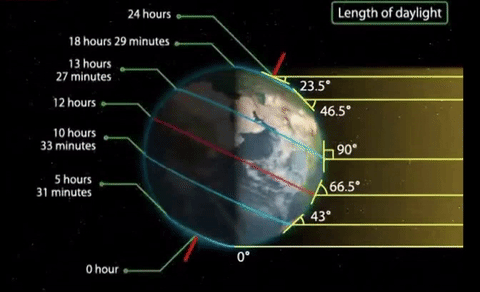

As a result, the northern and southern hemispheres are equally illuminated.įor the same reason, this is also the time when the Sun rises for an observer at one of Earth's rotational poles and sets at the other. The equinoxes are the only times when the solar terminator (the "edge" between night and day) is perpendicular to the equator.

ĭiagram of the Earth's seasons as seen from the south. The Antikythera mechanism predicts the equinoxes and solstices. Ancient Greek calendars too had the beginning of the year either at the autumnal or vernal equinox and some at solstices. In the northern hemisphere, the vernal equinox (March) conventionally marks the beginning of spring in most cultures and is considered the start of the New Year in the Assyrian calendar, Hindu, and the Persian or Iranian calendars, while the autumnal equinox (September) marks the beginning of autumn. Later it was realized that this happens on a day when the duration of the day and the night are practically equal and the word "equinox" comes from Latin aequus, meaning "equal", and nox, meaning "night". Systematically observing the sunrise, people discovered that it occurs between two extreme locations at the horizon and eventually noted the midpoint between the two. Hemisphere-neutral names are northward equinox for the March equinox, indicating that at that moment the solar declination is crossing the celestial equator in a northward direction, and southward equinox for the September equinox, indicating that at that moment the solar declination is crossing the celestial equator in a southward direction.ĭaylight is increasing on the vernal equinox and decreasing on the autumnal equinox.Įquinoxes on Earth General Leap years and other factors cause the dates of both events to vary slightly. During the year, equinoxes alternate with solstices. In the Southern Hemisphere, the reverse is true.

In the Northern Hemisphere, the March equinox is called the vernal or spring equinox while the September equinox is called the autumnal or fall equinox. As a consequence, according to a properly constructed and aligned sundial, the daytime duration is 12 hours. Long before conceiving this equality, primitive equatorial cultures noted the day when the Sun rises due east and sets due west, and indeed this happens on the day closest to the astronomically defined event. They are not exactly equal, however, because of the angular size of the Sun, atmospheric refraction, and the rapidly changing duration of the length of day that occurs at most latitudes around the equinoxes. On the day of an equinox, daytime and nighttime are of approximately equal duration all over the planet. The word is derived from the Latin aequinoctium, from aequus (equal) and nox ( genitive noctis) (night). The instants of the equinoxes are currently defined to be when the apparent geocentric longitude of the Sun is 0° and 180°. In modern times, since the Moon (and to a lesser extent the planets) causes Earth's orbit to vary slightly from a perfect ellipse, the equinox is officially defined by the Sun's more regular ecliptic longitude rather than by its declination. Equivalently, this is the moment when Earth's rotation axis is directly perpendicular to the Sun-Earth line, tilting neither toward nor away from the Sun. More precisely, an equinox is traditionally defined as the time when the plane of Earth's equator passes through the geometric centre of the Sun's disc. This occurs twice each year, around 20 March and 23 September. On the day of the equinox, the Sun appears to rise "due east" and set "due west". Equinoxes and solstices on Earth eventĪ solar equinox is a moment in time when the Sun crosses the Earth's equator, which is to say, appears directly above the equator, rather than north or south of the equator.


 0 kommentar(er)
0 kommentar(er)
